Accepted Scientific Name: Echinocereus engelmannii (Parry ex Engelm.) Lem.
Cactées 56. 1868

Echinocereus engelmannii (Echinocereus engelmannii) Photo by: Amante Darmanin
This is one of the most interesting species with the genus Echinocereus for its attractively spination.
Origin and Habitat: It is one of the most common species of cactus in the south-western USA (southern California, Arizona, southern Nevada, Utah) and Mexico (Baja California down to northern Baja California Sur, Sonora). Still, there are a number of varieties of Echinocereus scopulorumSN|21773]], and some are quite rare.
Altitude: From near sea level to 2400 metres.
Habitat: It grows in different dry habitats normally in well drained deserts in Sonoran and Mojave deserts, chaparral, pinyon-juniper woodlands, grass, and Great Basin shrub in flats with fine sand on the plain, washes and canyons in the desert, and also in gravelly, sandy, or rocky hillsides, and in mountain ranges. The rich flora and diverse vegetation of the area comprises, among the others, Ferocactus cylindraceusSN|10102]]SN|10102]], Mammillaria booliiSN|5454]]SN|3779]], Mammillaria microcarpaSN|9210]]SN|9210]], Mammillaria tetrancistraSN|3779]]SN|5454]], Echinocereus scopulorumSN|21773]], Fouquieria macdougaliiSN|11333]]SN|11333]], Larrea tridentata, Cercicium microphyllum, Idria columnarisSN|30207]]SN|30207]], Opuntia leptocaulisSN|19920]]SN|10936]], Opuntia ramosissimaSN|27958]]SN|27958]] and Opuntia engelmanniiSN|10936]]SN|19920]]. The species is abundant throughout its range. Land use change is a threat affecting this species, however it is not a major.
Synonyms:
See all synonyms of Echinocereus engelmannii
Common Names include:
ENGLISH: Varied-spines Hedgehog, Strawberry Hedgehog, Purple-spined Hedgehog Cactus, Neddle-spine Hedgehog, Munz's Hedgehog Cactus, Indian Strawberry Cactus, Howe Hedgehog, Engelmann's Hedgehog, Dagger-spine Hedgehog, Calico Cactus, Engelmann´s Hedgehog Cactus, Strawberry Cactus, Strawberry hedgehog cactus, Hedgehog Cactus
SPANISH (Español): Órgano-pequeño Fresa, Pitayita
Description: Echinocereus nicholiiSN|21818]] is a highly variable cactus species, sometimes divided into controversial varieties. Spine color polymorphism, common within Echinocereus engelmannii, provided the original basis for varieties chrysocentrus (yell spined form) and purpureus (dark purple spined form). The well-marked, identifiable extremes often occur in populations that include individuals easily assigned to other named varieties, or not assignable to any. The most formidably spiny extremes of the species were segregated as Echinocereus engelmannii var. howeiSN|7986]]SN|7987]] and Echinocereus engelmannii var. armatusSN|7987]]SN|7986]]; however, other individuals in the original populations (type localities) are readily assigned to E. engelmannii var. chrysocentrus. W. Blum et al. (1998) placed all of the above varieties under E. engelmannii subsp. engelmannii.
Habit: It is a clumping columnar cactus, 3-60-branched, ultimately forming somewhat open clumps of stems which can spread out as large as 1m in size.
Stems: Mostly erect light green, cylindrical or somewhat tapering distally, 10-30 (or more up to 60 cm) cm tall, 5-10 cm diameter, branching freely from the base;
Ribs: 11 to 14 low obtuse, tubercles indistinct, crests slightly undulate.
Areoles: 6-15 mm apart, wool present in first year only.
Spines: 8-20 per areole, usually straight (curved and twisted in desert mountains and peninsular ranges of California), individual spines with broad zones of different colours.
Central spines: 4 to 6 whitish or greyish, dull golden-yellow, or reddish brown to nearly black, 5-7(-8) cm long, divergent-porrect
Radial spines: 8 to 20 (or more) mm long .
Flowers: The more common form has bright pink flowers (Often varying from paler to darker in same population) but some varieties have different colours, from purple to lavender. The flowers are up to 7 cm in diameter, 5-13 cm long . Flower tube hairy. Anthers yellow, Stigma green in the centre.
Blooming phenology: Spring (February to April), flowers are diurnal close at night and reopen in the morning and last for about five days.
Fruit: Red or orangish 2.5-4 cm long, spherical, fleshy, pulp whitish be-coming infused with pink or red from the skin. Spine clusters deciduous. The fruit is edible (if you can reach through the spines). It is said to taste like strawberry, and is eaten readily by birds and rodents. Fruiting May-Jul.
Chromosome number: Echinocereus engelmannii is tetraploid 2n = 44 (whereas the related Echinocereus nicholiiSN|21818]] is diploid 2n = 22)
Subspecies, varieties, forms and cultivars of plants belonging to the Echinocereus engelmannii group
 Echinocereus engelmannii (Parry ex Engelm.) Lem.: ( var. engelmannii) ha 4 to 6 central spines whitish, golden-yellow, reddish brown to nearly black. It is a highly variable species. Distribution: Southwestern USA (California, Nevada, and Arizona) and northwestern Mexico (Baja California and Sonora).
Echinocereus engelmannii (Parry ex Engelm.) Lem.: ( var. engelmannii) ha 4 to 6 central spines whitish, golden-yellow, reddish brown to nearly black. It is a highly variable species. Distribution: Southwestern USA (California, Nevada, and Arizona) and northwestern Mexico (Baja California and Sonora). Echinocereus engelmannii var. acicularis L.D.Benson in L.D.Benson: has only 2-4 central spines and more robust habit. Distribution: California, Arizona, Baja California and Sonora.
Echinocereus engelmannii var. acicularis L.D.Benson in L.D.Benson: has only 2-4 central spines and more robust habit. Distribution: California, Arizona, Baja California and Sonora. Echinocereus engelmannii var. armatus L.D.Benson: is the most formidably spiny extreme of the species, central spines up to 13 cm long. Distribution: California and Nevada.
Echinocereus engelmannii var. armatus L.D.Benson: is the most formidably spiny extreme of the species, central spines up to 13 cm long. Distribution: California and Nevada. Echinocereus engelmannii var. chrysocentrus (Engelm. & J.M.Bigelow) Rümpler in C.F.Först.: has 5-6 very stout yellowish to brown central spines, up to 7 cm long (or more), but it is very variable. Distribution: California, Nevada, Arizona, and Utah.
Echinocereus engelmannii var. chrysocentrus (Engelm. & J.M.Bigelow) Rümpler in C.F.Först.: has 5-6 very stout yellowish to brown central spines, up to 7 cm long (or more), but it is very variable. Distribution: California, Nevada, Arizona, and Utah.- Echinocereus engelmannii var. howei L.D.Benson: Distribution: California and Nevada.
 Echinocereus engelmannii var. munzii (Parish) W.Pierce & Fosberg: is a mountain form with white spines twisting up up from small bodies, with 4 central spines (except in an occasional areole) instead of 1 and magenta flowers. Distribution: California and Baja California.
Echinocereus engelmannii var. munzii (Parish) W.Pierce & Fosberg: is a mountain form with white spines twisting up up from small bodies, with 4 central spines (except in an occasional areole) instead of 1 and magenta flowers. Distribution: California and Baja California. Echinocereus engelmannii var. purpureus L.D.Benson: is a dark-colored, short-spined morphological form that occurs interspersed throughout populations of Echinocereus engelmannii var. chrysocentrus. Distribution: Utah.
Echinocereus engelmannii var. purpureus L.D.Benson: is a dark-colored, short-spined morphological form that occurs interspersed throughout populations of Echinocereus engelmannii var. chrysocentrus. Distribution: Utah. Echinocereus engelmannii var. variegatus (Engelm. & J.M.Bigelow) Rümpler in C.F.Först.: has multicoloured dark-colored spines, typically the central spines are long red or black and contrasts nicely with the white radial spines. Distribution: Arizona and Utah.
Echinocereus engelmannii var. variegatus (Engelm. & J.M.Bigelow) Rümpler in C.F.Först.: has multicoloured dark-colored spines, typically the central spines are long red or black and contrasts nicely with the white radial spines. Distribution: Arizona and Utah.
Bibliography: Major references and further lectures:
1) Edward Anderson “The Cactus family” Timber Press, Incorporated, 2001
2) James Cullen, Sabina G. Knees, H. Suzanne Cubey "The European Garden Flora Flowering Plants: A Manual for the Identification of Plants Cultivated in Europe, Both Out-of-Doors and Under Glass" Cambridge University Press, 11/Aug/2011
3) David R Hunt; Nigel P Taylor; Graham Charles; International Cactaceae Systematics Group. "The New Cactus Lexicon" dh books, 2006
4) Urs Eggli, Leonard E. Newton: “Etymological Dictionary of Succulent Plant Names” Springer, Berlin/Heidelberg 2010
5) N. L. Britton, J. N. Rose: “The Cactaceae. Descriptions and Illustrations of Plants of the Cactus Family.” Volume II, The Carnegie Institution of Washington, Washington 1920
6) Burquez Montijo, A., Butterworth, C., Felger, R.S. & Porter, J.M. 2013. Echinocereus engelmannii. In: IUCN 2013. "IUCN Red List of Threatened Species." Version 2013.2. <www.iucnredlist.org>. Downloaded on 19 January 2014.
7) Echinocereus engelmannii. In: Flora of North America <http://www.efloras.org/florataxon.aspx?flora_id=1&taxon_id=242415249>. Downloaded on 19 January 2014.
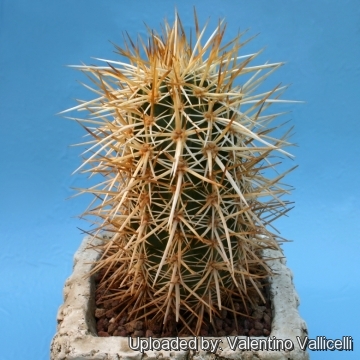 Echinocereus engelmannii (Echinocereus engelmannii) Photo by: Valentino Vallicelli
Echinocereus engelmannii (Echinocereus engelmannii) Photo by: Valentino Vallicelli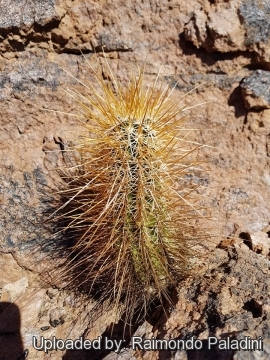 Echinocereus engelmannii, Arizona, USA. (Echinocereus engelmannii) Photo by: Raimondo Paladini
Echinocereus engelmannii, Arizona, USA. (Echinocereus engelmannii) Photo by: Raimondo Paladini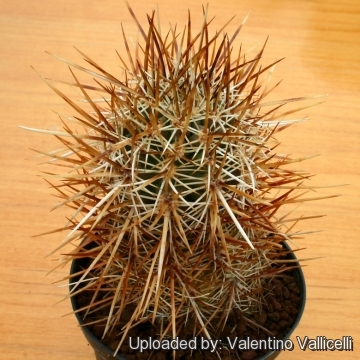 Echinocereus engelmannii (Echinocereus engelmannii) Photo by: Valentino Vallicelli
Echinocereus engelmannii (Echinocereus engelmannii) Photo by: Valentino Vallicelli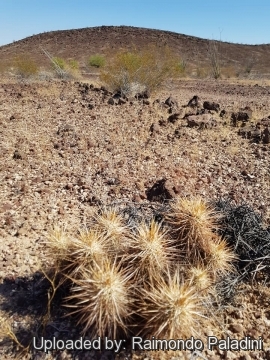 Echinocereus engelmannii, Nayarit, Sonora, Mexico. (Echinocereus engelmannii) Photo by: Raimondo Paladini
Echinocereus engelmannii, Nayarit, Sonora, Mexico. (Echinocereus engelmannii) Photo by: Raimondo Paladini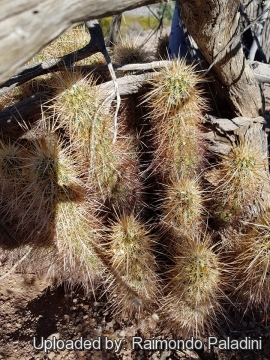 Echinocereus engelmannii, Arizona, USA. (Echinocereus engelmannii) Photo by: Raimondo Paladini
Echinocereus engelmannii, Arizona, USA. (Echinocereus engelmannii) Photo by: Raimondo Paladini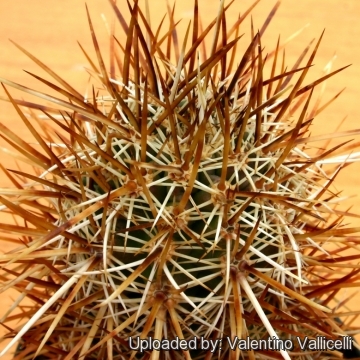 Echinocereus engelmannii (Echinocereus engelmannii) Photo by: Valentino Vallicelli
Echinocereus engelmannii (Echinocereus engelmannii) Photo by: Valentino VallicelliCultivation and Propagation: The Strawberry Hedgehog Echinocereus engelmannii grows rather slowly and it is sensitive to overwatering (rot prone) and needs a very good drainage to avoid rotting, but requires more moisture than true desert cacti to grow and produce flower.
Soil: Use a loose well drained cactus mix.
Repotting: It require a deep pot suited to accommodate the swollen root, repotting with fresh potting-mix should be done every other year or when the plant has outgrown its pot. However, repotting doesn't necessarily mean they'll need larger containers.
Sun Exposure: Light shade when young, full sun later. Outside it likes strong sunshine, but is tolerant and do well with light shade during the hot Summer months. Tends to bronze in strong light, which encourages spine production.
Hardiness: It is cold resistant to -10° ( or less depending on clones) for short periods of time. It will show its flowers only if we provide an adequate winter rest period.
Watering: They require moderately watering through the growing season. This can be done weekly or more frequently during the summertime, if the weather is sunny enough, but allow to dry fully before watering again. Kept this way, plants will show a healthy growth. Keep rather dry as soon as the temperature starts dropping in October and keep it dry in winter. The plant survives outside without protection in winter (cold hardy to -5° ) but is then somewhat prone to rot, too.
Fertilization: Give an occasional high potassium liquid feed during the active growing period.
Garden uses: It is a fine plant for a rock garden or container, contrasts well with agaves, yuccas, and low-growing flowering plants. Nice planted with Agave utahensisSN|581]]SN|581]], another very hardy species.
Pest and diseases: They are generally fairly easy to grow, especially if kept pest-free. They are susceptible to, scale insects and spider mite. Watch carefully for infestations of stem and root mealy bugs, and damage from these may well initiate fungal attack.
Propagation: Seeds, also can be grown from cutting as it branches from the base. Take cuttings spring or summer, let them dry till the ends callous well. Then replant them in fresh cactus soil that is ever so slightly moist, and keep it that way till they root. Surface sowing is the best; seeds germinate in 14-28 days at 20° C, remembering that seedlings dislike strong light and dry conditions.

















